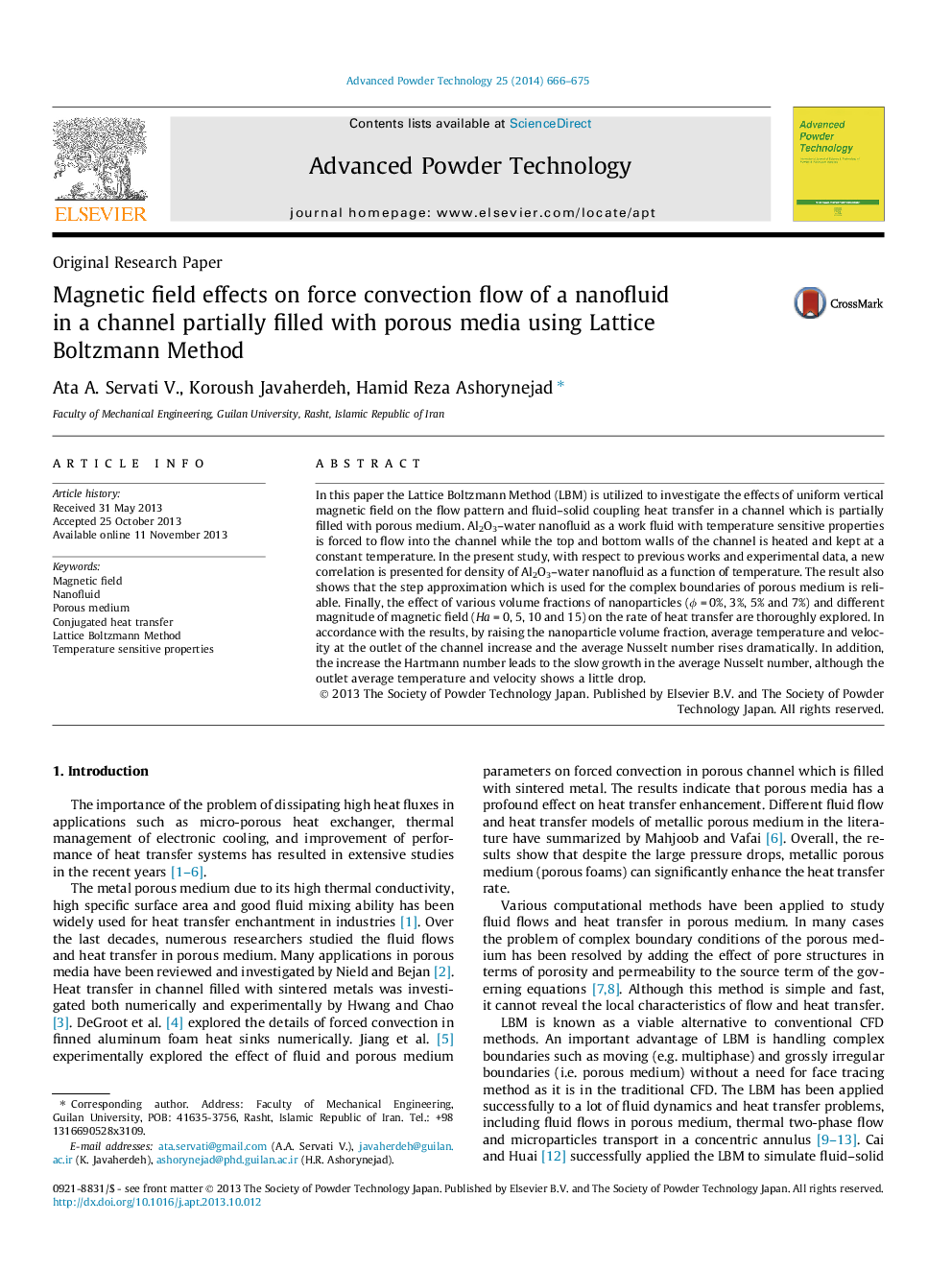| Article ID | Journal | Published Year | Pages | File Type |
|---|---|---|---|---|
| 143848 | Advanced Powder Technology | 2014 | 10 Pages |
•We represent a new correlation for density of nanofluid as a function of temperature.•Increasing the nanoparticle volume fraction rises the Nu dramatically.•Increasing the Ha leads to a slight increase in the average Nusselt number.•As the ϕ increases the effect of magnetic field on the heat transfer decreases.
In this paper the Lattice Boltzmann Method (LBM) is utilized to investigate the effects of uniform vertical magnetic field on the flow pattern and fluid–solid coupling heat transfer in a channel which is partially filled with porous medium. Al2O3–water nanofluid as a work fluid with temperature sensitive properties is forced to flow into the channel while the top and bottom walls of the channel is heated and kept at a constant temperature. In the present study, with respect to previous works and experimental data, a new correlation is presented for density of Al2O3–water nanofluid as a function of temperature. The result also shows that the step approximation which is used for the complex boundaries of porous medium is reliable. Finally, the effect of various volume fractions of nanoparticles (ϕ = 0%, 3%, 5% and 7%) and different magnitude of magnetic field (Ha = 0, 5, 10 and 15) on the rate of heat transfer are thoroughly explored. In accordance with the results, by raising the nanoparticle volume fraction, average temperature and velocity at the outlet of the channel increase and the average Nusselt number rises dramatically. In addition, the increase the Hartmann number leads to the slow growth in the average Nusselt number, although the outlet average temperature and velocity shows a little drop.
Graphical abstractFigure optionsDownload full-size imageDownload as PowerPoint slide
